
Cactus Around Las Vegas, Vegetation Around Las Vegas
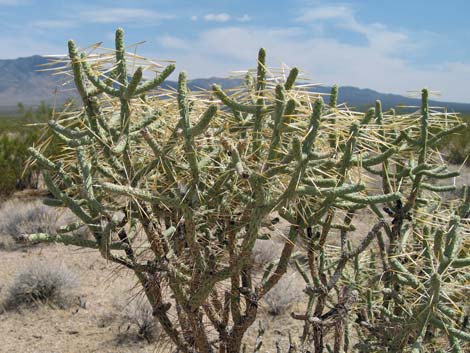 Note narrow stems and long, but sparse spines |
General: Pencil Cholla (Cylindropuntia ramosissima) is an upright, shrub-like cactus with very narrow stem segments and long, but sparse spines. The stem segments are short (to about 3-inches) and narrow (about 1/4-inch diameter). The spines tend to be solitary rather than clustered as in most cactus. The green stem color is clearly evident. Close-up views of the stem reveal lines in a diamond-shaped or crosshatch pattern. Flowers are small and yellow to reddish. Pencil Cholla usually is an uncommon component of vegetation communities on well-drained sandy, gravelly, and rocky soils on flats, bajadas, and moderate slopes into the lower mountains in the Lower Sonoran (Creosote-Bursage Flats) and Upper Sonoran (Mojave Desert Scrub) life zones. Occasionally, it can be found growing in relatively dense stands. Around Las Vegas, Pencil Cholla are most abundant along Morning Star Mine Road in Mojave National Preserve, a few miles east of Cima. Pencil Cholla can be found elsewhere, but they are generally uncommon. Look for low-growing plants along the road to Calico Basin at Red Rock Canyon NCA. and around the Red Rock Canyon Visitor Center. Family: Cactus (Cactaceae). |
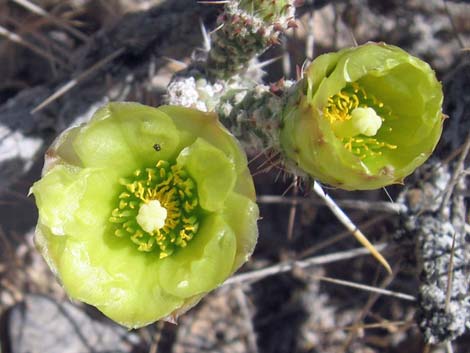 Pencil Cholla flowers |
Other Names: Diamond Cholla, Opuntia ramosissima. Plant Form: Upright, open shrub. Height: Usually to about 3 feet; to 5 feet. Trunk: Stout central stem. Stems: Divided into segments, cylindrical. Segments usually less than 4-inches long, about 1/4-inch diameter. Stem Surface: smooth with diamond or crosshatch pattern. Spines: Central: Usually one or none (range: 0 to 3); to about 2-inches long, straight, round. Radial: none. Glochids: Absent. |
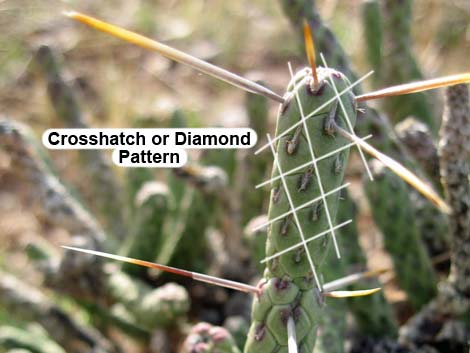 Stem segments have a diamond pattern on the surface (see lines) |
Flowers: Blooms in early summer. Inflorescence: flowers solitary at the ends of stem segments. Flower: small (less than 1-inch across), yellow, orange, or red; filaments green. Fruit: Dry, small, with dense spines. Seeds: Many, small. Habitat: Dry, well-drained sandy, gravelly, and rocky soils on flats and upper bajadas. Distribution: Southern California deserts, southern Nevada, and Arizona. Elevation: To about 4,000 feet. Comments: These cactus often grow low and hidden in clumps of bunchgrass and shrubs, catching the unwary passerby in the shin. |
 Tall-growing Pencil Cholla |
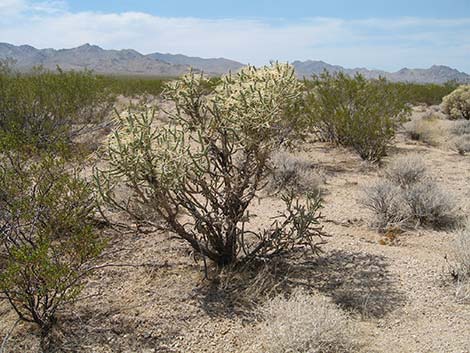 Tall-growing Pencil Cholla |
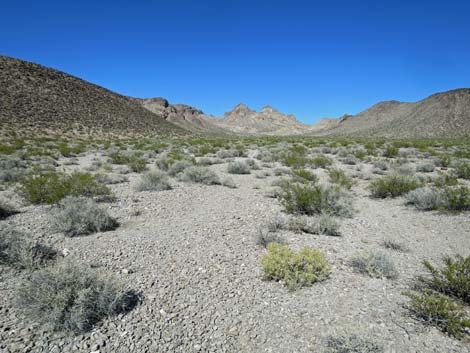 Low-growing Pencil Cholla |
 Low-growing Pencil Cholla |
 |
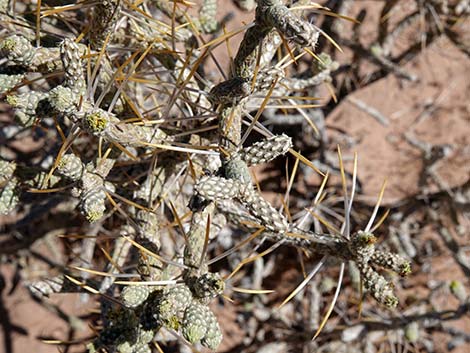 |
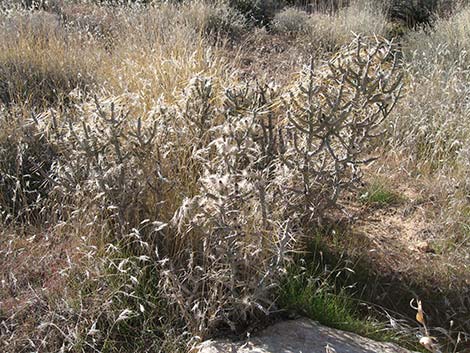 |
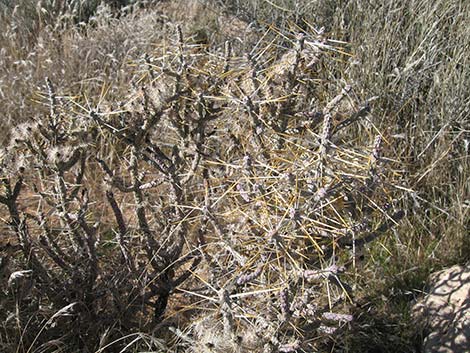 |
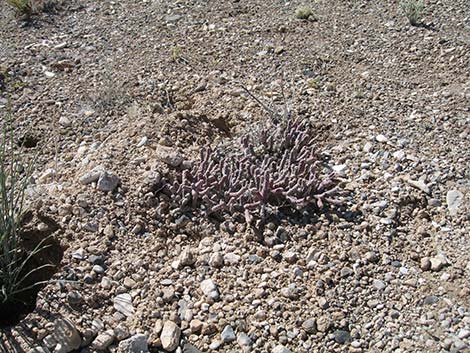 Unusual, prostrate growth form |
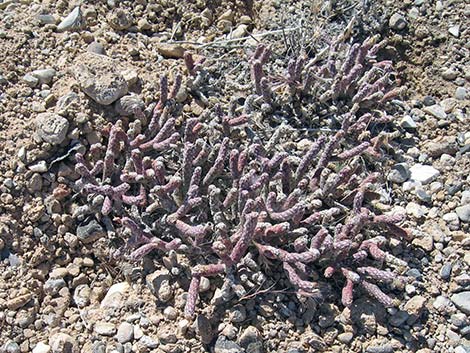 Unusual, prostrate growth form |
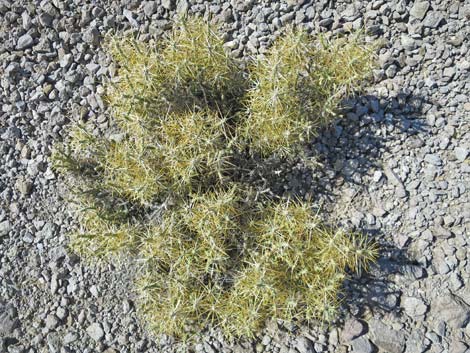 |
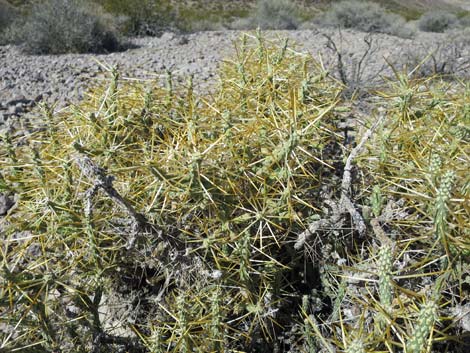 |
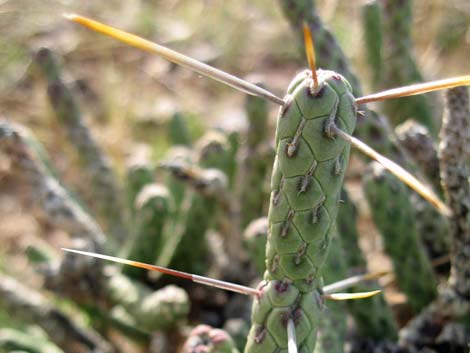 Stem segment with few spines and diamond pattern on the surface |
 Stem segments have a diamond pattern on the surface (see lines) |
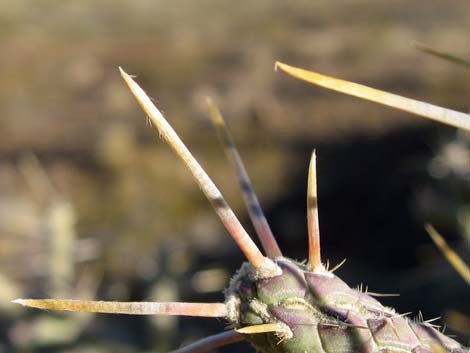 Sparse spines (with barbs) |
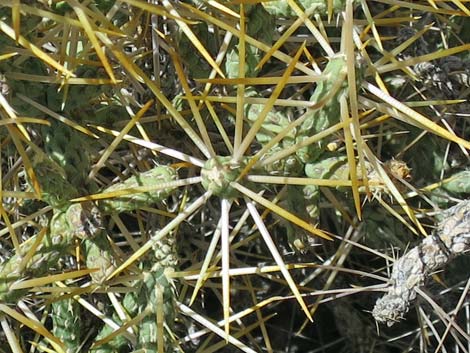 Dense spines |
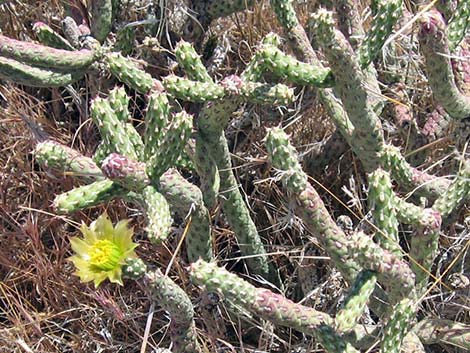 |
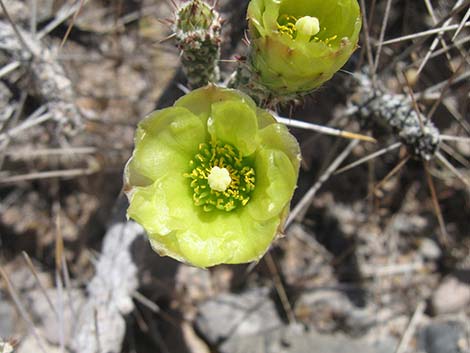 |
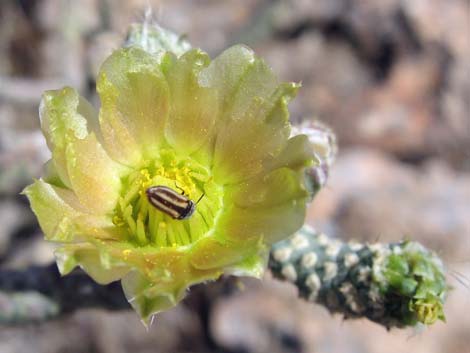 Pencil Cholla flower and beetle |
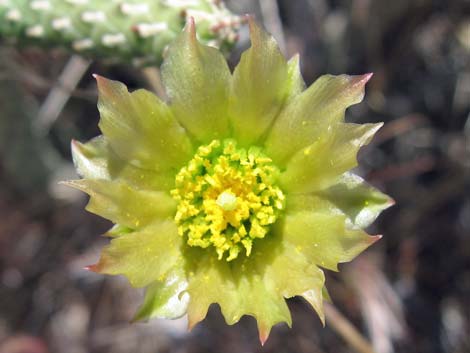 Pencil Cholla flower |
 Pencil Cholla flower and developing fruit |
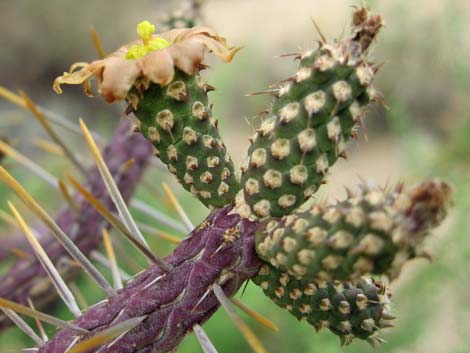 Pencil Cholla flower and developing fruit |
 Pencil Cholla with densely spined fruits |
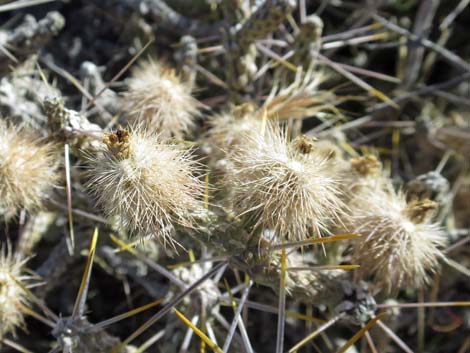 Pencil Cholla with densely spined fruits |
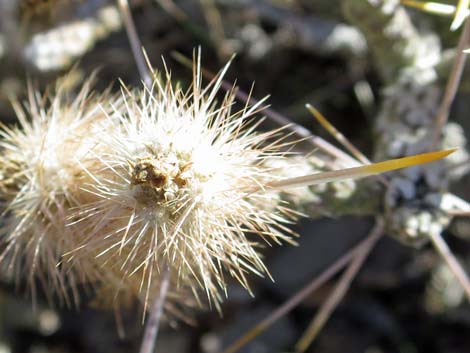 Pencil Cholla with densely spined fruits |
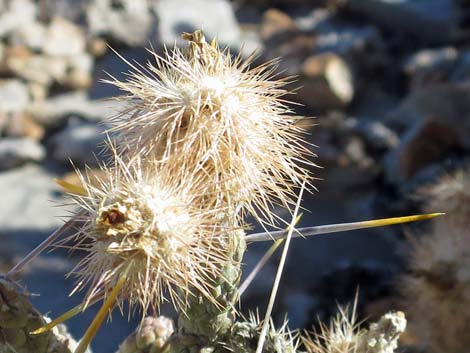 Pencil Cholla with densely spined fruits |
 Pencil Cholla fruits dried on the plant |
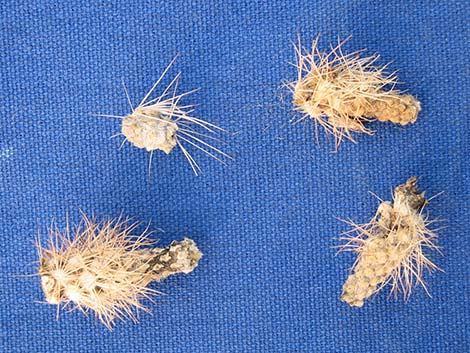 Pencil Cholla fruits dried and picked up from the ground |
Note: All distances, elevations, and other facts are approximate. Names generally follow the USDA database.
![]() ; Last updated 220814
; Last updated 220814
| All Cactus | Plant Species Index | Glossary | Copyright, Conditions, Disclaimer | Home |